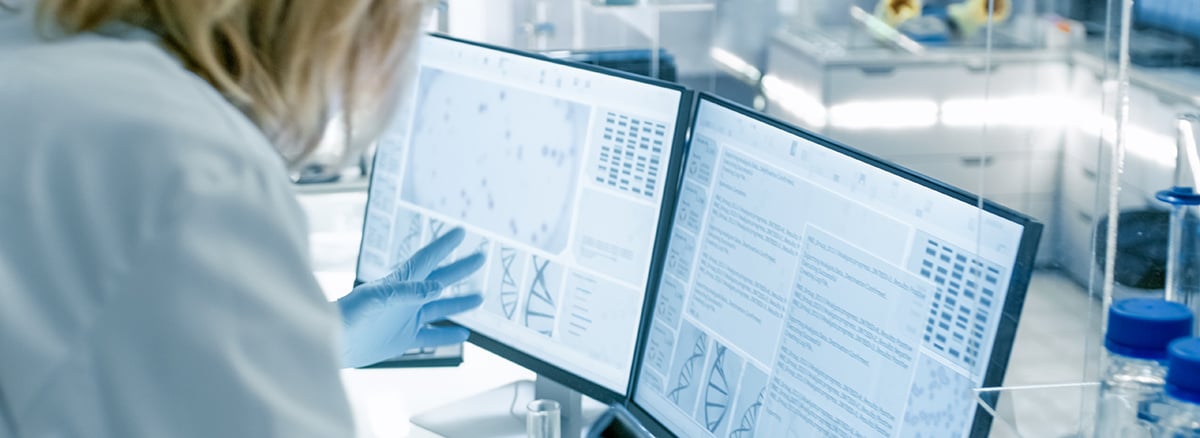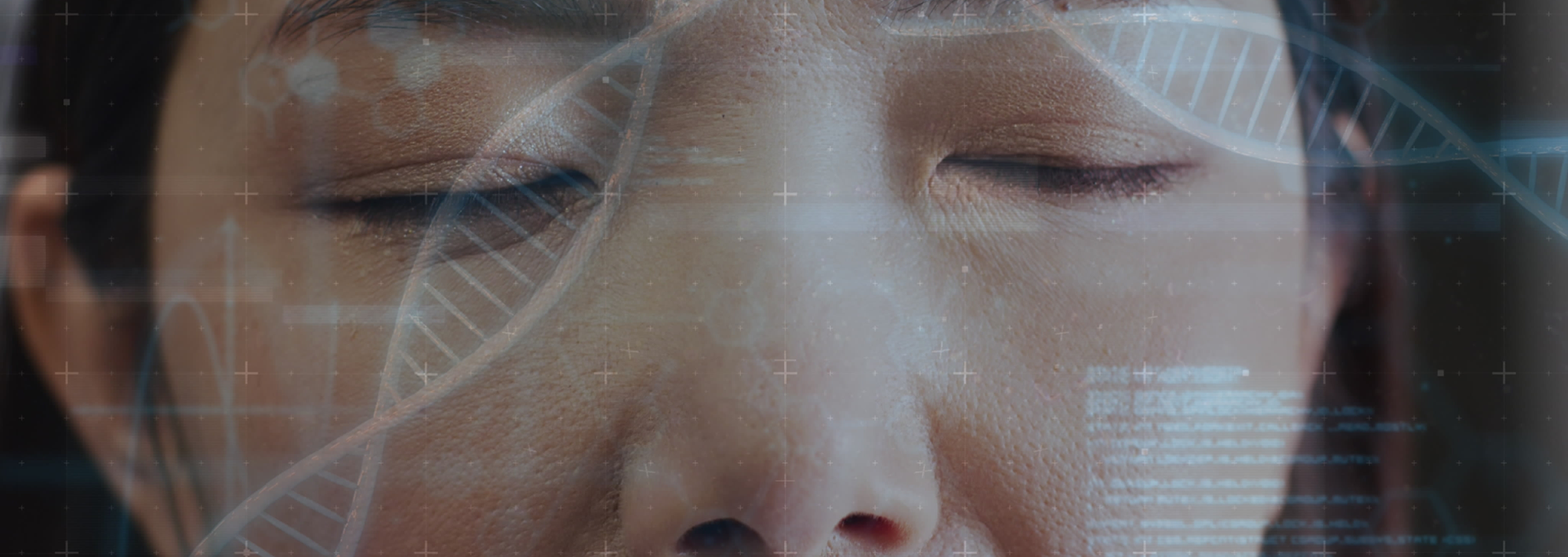The fusion of data science and bioinformatics with oncology research marks a paradigm shift in understanding, diagnosing, and treating cancer. This synergy is transforming how researchers approach the complexity of cancer biology, develop targeted therapies, and improve patient outcomes. From leveraging multi-omics data to designing personalized treatment regimens, the potential of data-driven oncology is unparalleled. Here’s a deep dive into how these technologies are reshaping the field.
Multi-Omics Integration: Unraveling Cancer Complexity
Cancer arises from the complex interplay of multiple biological systems. Multi-omics approaches integrate genomics, epigenomics, proteomics, and metabolomics data to provide a holistic understanding of cancer biology. This integration is facilitated by advanced data science techniques that help identify novel pathways, refine disease classifications, and suggest targeted interventions.
Applications in Oncology Research
- Genomics: Identifying oncogenic mutations in specific cancer types is a cornerstone of precision oncology. For example, EGFR mutations in non-small cell lung cancer guide the use of tyrosine kinase inhibitors, while KRAS mutations in colorectal cancer inform resistance mechanisms and alternative therapeutic strategies.
- Epigenomics: Studying DNA methylation and histone modifications reveals how tumor suppressor genes are silenced. For instance, hypermethylation of the MLH1 promoter is linked to microsatellite instability in colorectal cancer, influencing prognosis and treatment.
- Proteomics: Profiling proteins, such as HER2 in breast cancer, aids in the identification of biomarkers that predict treatment response and disease outcomes.
- Metabolomics: Analyzing metabolic pathways like the Warburg effect—where cancer cells rely on glycolysis even in oxygen-rich conditions—uncovers therapeutic vulnerabilities and informs drug development.
By synthesizing these diverse datasets, researchers can build a comprehensive picture of cancer biology, paving the way for innovative interventions.
AI-Driven Predictive Analytics: Revolutionizing Precision Medicine
Artificial intelligence (AI) and machine learning (ML) are transforming oncology by leveraging vast datasets to predict disease progression, treatment response, and outcomes. These tools enable personalized medicine by identifying patterns and trends invisible to traditional methods.
Notable Use Cases
- Predictive Biomarkers: AI models analyze molecular and clinical data to predict patient responses to immunotherapies. For instance, PD-L1 expression levels can help determine the likelihood of success with checkpoint inhibitors.
- Treatment Outcome Predictions: ML algorithms assess risk factors for tumor recurrence or metastasis. For example, using genomic profiles and clinical history, these models can guide follow-up care and therapeutic adjustments.
- Adaptive Therapies: Data from wearable devices and patient monitoring systems provide real-time insights, enabling dynamic modifications to treatment plans for improved efficacy and reduced side effects.
This shift from a generalized approach to a tailored one represents a paradigm change in oncology.
Single-Cell Bioinformatics: Resolving Tumor Heterogeneity
Tumors are not homogenous; they consist of diverse cell populations with unique genetic and phenotypic characteristics. Single-cell sequencing enables researchers to deconstruct this complexity, leading to precise therapeutic strategies.
Key Contributions
- Clonal Evolution Studies: Single-cell analysis tracks the genetic evolution of tumors, identifying subclones that might evade therapy and lead to relapse.
- Microenvironment Insights: Profiling immune cells within the tumor microenvironment sheds light on why some tumors resist immunotherapies. For example, identifying suppressive T cells can inform strategies to boost anti-tumor immunity.
- Therapeutic Targeting: Single-cell bioinformatics pinpoints cells responsible for metastasis or drug resistance, enabling the development of treatments targeting these aggressive populations.
This granular resolution allows for treatments that address both the bulk tumor and resistant subclones.
Biomarker Discovery: Improving Early Detection and Monitoring
Biomarkers are critical in cancer management, guiding early detection, prognosis, and treatment monitoring. Advances in bioinformatics enable the analysis of large datasets to discover and validate new biomarkers.
Recent Advances
- Liquid Biopsies: Technologies analyzing circulating tumor DNA (ctDNA) and exosomal RNA allow for non-invasive cancer detection and monitoring, offering a less invasive alternative to tissue biopsies.
- Prognostic Biomarkers: Molecular signatures like Oncotype DX predict recurrence risks and guide treatment decisions in breast cancer, reducing unnecessary chemotherapy.
- Companion Diagnostics: Biomarker assays, such as those for HER2, ensure targeted therapies like trastuzumab are used for the right patients, enhancing efficacy and minimizing side effects.
These advancements are enabling earlier interventions and more effective monitoring of disease progression.
Immuno-Oncology: Transforming Cancer Treatment
Immuno-oncology harnesses the immune system to fight cancer, and data science plays a pivotal role in advancing this field. Bioinformatics tools analyze large-scale immunogenomic data to identify immune-related biomarkers and design effective therapies.
Breakthrough Applications
- Neoantigen Prediction: Algorithms analyze tumor mutations to identify unique antigens for personalized cancer vaccines, offering a tailored approach to immunotherapy.
- Checkpoint Inhibitor Response: Identifying biomarkers such as PD-L1 expression helps predict which patients will benefit from therapies targeting PD-1 and CTLA-4 pathways.
- Microbiome Insights: Research into gut microbiota reveals their role in modulating immune responses, potentially influencing immunotherapy outcomes.
These discoveries are driving the next generation of immunotherapies, offering hope for cancers previously considered untreatable.
Accelerating Drug Discovery and Development
Data science and bioinformatics are revolutionizing drug discovery by streamlining processes and reducing costs. These tools enable the identification of novel targets, simulation of drug interactions, and optimization of clinical trials.
Innovative Approaches
- Target Identification: Mining genomic and proteomic datasets helps uncover actionable targets, such as mutations in the BRCA genes for breast and ovarian cancers.
- Virtual Screening: In silico experiments simulate drug-target interactions, prioritizing compounds for synthesis and reducing time and costs.
- Biomarker-Guided Trials: Predictive biomarkers enable the selection of patient populations most likely to benefit from new therapies, increasing trial success rates.
This data-driven approach is accelerating the development of therapies tailored to specific cancer subtypes.
Real-World Data: Bridging Research and Clinical Practice
Real-world data (RWD) complements traditional research by providing insights from patient registries, electronic health records, and monitoring devices.
Applications in Oncology
Real-world data (RWD) refers to information collected outside of controlled clinical trials, such as data from electronic health records (EHRs), patient registries, insurance claims, and wearable devices. In oncology, RWD provides valuable insights that enhance understanding of treatment effectiveness, safety, and personalization in real-world settings. Its integration with traditional research data helps bridge the gap between experimental findings and practical clinical applications.
Comparative Effectiveness Research
- Purpose: This involves analyzing RWD to compare the effectiveness of different cancer treatments in real-world scenarios.
- Example: While clinical trials provide controlled environments for testing treatments, they often involve a limited patient population. RWD, on the other hand, includes diverse groups with varying demographics, comorbidities, and disease stages. For instance, comparing the efficacy of immunotherapies versus chemotherapy for advanced lung cancer can reveal insights not apparent in trials.
- Outcome: Results from RWD analysis can guide the development of clinical guidelines and inform oncologists about the best treatment options for specific patient populations.
Post-Market Surveillance
- Purpose: After a therapy is approved, RWD helps monitor its performance in a broader, more diverse population over an extended period.
- Example: Adverse events, which may not have been observed during clinical trials due to smaller sample sizes or shorter follow-up periods, can emerge in real-world use. Monitoring the long-term effects of targeted therapies like PARP inhibitors in ovarian cancer patients helps identify safety concerns and efficacy trends over time.
- Outcome: This ensures that treatments remain safe and effective across different populations, enabling regulators and manufacturers to make necessary adjustments, such as dosage changes or new contraindications.
Personalized Monitoring
- Purpose: RWD enables tracking of individual patient responses to cancer treatments, allowing for adjustments tailored to each patient’s unique needs.
- Example: Wearable devices and mobile health apps can collect data on a patient’s activity levels, symptoms, and vitals during treatment. For example, monitoring fatigue levels in breast cancer patients undergoing chemotherapy helps oncologists fine-tune treatment schedules or supportive care measures.
- Outcome: This leads to more precise and adaptive treatment plans, improving patient outcomes and quality of life.
Bridging Research and Practice
The integration of RWD with traditional research datasets creates a comprehensive picture of treatment effectiveness and safety:
- It accounts for variability in patient populations, enhancing the generalizability of findings.
- It provides evidence that complements clinical trial data.
- It facilitates the adoption of evidence-based practices in oncology care.
By leveraging RWD, the oncology field is better equipped to translate research advancements into actionable insights for patient care.
Overcoming Challenges in Data-Driven Oncology
The integration of data science and bioinformatics in oncology holds transformative potential, but significant challenges must be addressed to maximize its impact. These challenges span technical, ethical, and collaborative domains, requiring strategic solutions to ensure the continued advancement of data-driven cancer research and care.
Data Quality: Inconsistencies in Data Collection and Annotation
- Challenge: Data collected from different sources (e.g., hospitals, research institutions, wearable devices) often vary in format, accuracy, and completeness. Variability in how data is labeled or annotated can lead to inconsistencies, reducing the reliability of analyses.
- Example: A study analyzing genomic data from multiple institutions may encounter differences in sequencing methods, metadata completeness, or error rates, complicating integration.
- Impact: Poor data quality can introduce biases, affect reproducibility, and limit the insights derived from analyses.
Solutions
- Standardizing data collection protocols and annotation guidelines.
- Implementing quality control processes to clean and validate datasets before analysis.
- Encouraging collaboration through data-sharing frameworks that enforce uniform standards, such as the FAIR (Findable, Accessible, Interoperable, Reusable) principles.
Computational Demands: High-Throughput Analyses Require Robust Infrastructure
- Challenge: Processing large-scale omics datasets, imaging data, and real-world data (RWD) requires immense computational power, specialized software, and efficient storage systems. Not all institutions have access to these resources.
- Example: Analyzing single-cell sequencing data involves managing terabytes of information and performing complex algorithms to identify cellular heterogeneity.
- Impact: Limited computational resources can delay research progress, reduce scalability, and hinder real-time data processing for clinical applications.
Solutions
- Expanding access to high-performance computing (HPC) clusters and cloud-based platforms.
- Developing more efficient algorithms and tools that reduce computational overhead.
- Promoting collaborations with technology companies or initiatives like NIH’s Data Commons, which provide shared infrastructure.
Ethical Considerations: Balancing Data Accessibility with Patient Privacy
- Challenge: Sharing sensitive health data for research raises concerns about patient privacy and data security. Striking a balance between enabling research and protecting individuals’ rights is critical.
- Example: Genomic data linked to electronic health records could be used to identify individuals if not properly anonymized.
- Impact: Privacy breaches can erode public trust, discourage data sharing, and lead to legal ramifications.
Solutions
- Employing robust de-identification and encryption techniques to protect patient data.
- Implementing ethical frameworks like GDPR (General Data Protection Regulation) for global data sharing.
- Using federated learning, where algorithms analyze data locally without moving sensitive information.
Interdisciplinary Expertise: Bridging Knowledge Across Domains
- Challenge: Effective data-driven oncology requires collaboration between biologists, clinicians, bioinformaticians, and data scientists. However, gaps in communication and understanding across disciplines can hinder progress.
- Example: A bioinformatician may lack clinical context for interpreting data, while a clinician may not understand the technical limitations of an algorithm.
- Impact: Miscommunication or siloed expertise can result in misaligned goals, inefficient workflows, or errors in translating research findings into practice.
Solutions
- Creating multidisciplinary teams with cross-training opportunities to foster mutual understanding.
- Establishing dedicated roles, such as clinical informaticians, who serve as liaisons between technical and medical teams.
- Encouraging collaborative research grants and joint educational programs to promote interdisciplinary work.
To ensure the success of data-driven oncology, addressing these challenges requires:
- Investment in infrastructure and standardization efforts.
- Adoption of ethical data-sharing practices.
- Fostering interdisciplinary collaboration through training and shared goals.
By overcoming these barriers, data science and bioinformatics can unlock their full potential, transforming cancer research and care for better outcomes.
FAQs
How does data science improve cancer treatment?
Data science improves cancer treatment by analyzing large, complex datasets to develop personalized therapies and enhance treatment precision.
- Predictive Modeling: Machine learning algorithms analyze patient data to forecast responses to specific treatments, helping oncologists tailor therapies to individual needs.
- Biomarker Identification: Advanced data analytics identifies molecular markers associated with cancer progression or treatment responses, enabling early intervention and more effective monitoring.
- Real-Time Insights: Wearable technology and real-world data streams provide continuous patient monitoring, offering dynamic insights into treatment effectiveness and adjustments.
Through these innovations, data science is driving more accurate, timely, and patient-specific care in oncology.
What is the role of bioinformatics in immuno-oncology?
Bioinformatics plays a crucial role in understanding the immune system’s interaction with cancer and advancing immunotherapy.
- Neoantigen Discovery: Algorithms identify tumor-specific antigens for developing personalized cancer vaccines.
- Immune Profiling: Bioinformatics tools analyze the tumor microenvironment to assess immune cell infiltration and activity, informing immunotherapy strategies.
- Checkpoint Inhibitor Selection: Identifying genetic or molecular markers that predict responses to immune checkpoint inhibitors, such as PD-1 or CTLA-4 inhibitors.
- Microbiome Research: Analyzing microbiota’s influence on immune responses and therapeutic outcomes to enhance treatment efficacy.
These capabilities are transforming immuno-oncology by uncovering new therapeutic targets and optimizing existing treatments.
Why is single-cell sequencing important in cancer research?
Single-cell sequencing is critical for understanding the complexity of tumors, which often consist of diverse cell populations with distinct genetic and phenotypic profiles.
- Tumor Heterogeneity: Reveals the genetic diversity within a tumor, identifying resistant clones that drive relapse or metastasis.
- Therapeutic Targeting: Pinpoints subpopulations that are particularly aggressive or drug-resistant, allowing for more precise interventions.
- Immune Microenvironment: Maps interactions between cancer cells and immune cells, shedding light on mechanisms of immune evasion.
- Evolutionary Tracking: Monitors clonal evolution during treatment, providing insights into tumor adaptation and resistance mechanisms.
By offering a granular view of tumor biology, single-cell sequencing supports the development of more effective, tailored therapies.
How do bioinformatics tools aid in drug discovery?
Bioinformatics accelerates drug discovery by streamlining the identification of therapeutic targets and optimizing clinical trials.
- Target Identification: Bioinformatics pipelines analyze genomic, proteomic, and transcriptomic data to uncover novel targets for drug development.
- Virtual Screening: Computational models simulate interactions between potential drugs and their targets, prioritizing the most promising candidates.
- Structure-Based Drug Design: Uses molecular modeling to refine drug designs for enhanced efficacy and reduced side effects.
- Biomarker-Guided Trials: Identifies patient subsets most likely to respond to new therapies, improving trial outcomes and reducing costs.
This data-driven approach reduces the time and expense of traditional drug discovery processes while increasing success rates.
What are the challenges of using data science and bioinformatics in oncology?
While these technologies offer transformative potential, several challenges must be addressed:
- Data Quality and Integration: Variability in data collection, annotation, and standardization complicates analyses.
- Computational Demands: High-throughput sequencing and big data analytics require robust computational infrastructure, which can be resource-intensive.
- Interdisciplinary Collaboration: Effective use of these tools demands collaboration between oncologists, data scientists, and bioinformaticians, which may require overcoming communication barriers.
- Ethical Concerns: Balancing data accessibility with patient privacy and ensuring equitable access to resulting therapies are significant ethical challenges.
Addressing these hurdles is essential to fully harness the power of data science and bioinformatics in oncology.
What ethical issues arise in data-driven oncology?
Data-driven oncology raises important ethical questions that must be navigated carefully:
- Privacy and Consent: Ensuring that patient data is used responsibly and with informed consent, particularly in multi-institutional research.
- Equity in Access: Preventing disparities in access to personalized treatments and advanced diagnostics, especially in under-resourced regions.
- Bias in Algorithms: Mitigating biases in predictive models that could lead to unequal treatment recommendations or outcomes.
- Dual-Use Concerns: Addressing potential misuse of technologies, such as for creating “designer drugs” or manipulating immune responses beyond therapeutic purposes.
Establishing clear ethical guidelines and robust regulatory frameworks is vital to balance innovation with societal responsibility.
What are the advantages of real-world data (RWD) in oncology?
Real-world data bridges the gap between controlled clinical trials and actual clinical practice, offering several advantages:
- Diverse Populations: RWD captures insights from broader patient demographics, including those often underrepresented in clinical trials.
- Post-Market Surveillance: Tracks long-term treatment effects and safety profiles in routine practice settings.
- Comparative Effectiveness: Allows for head-to-head comparisons of treatments outside the constraints of a trial.
- Personalized Monitoring: Enables dynamic adjustments to treatment plans based on real-time patient feedback and outcomes.
By integrating RWD with bioinformatics tools, researchers can refine therapies and improve patient care on a population level.
How is CRISPR technology contributing to oncology through bioinformatics?
CRISPR, combined with bioinformatics, is revolutionizing cancer research by enabling precise genetic modifications and accelerating therapeutic development.
- Gene Editing: CRISPR is used to knock out oncogenes or restore tumor suppressor genes in cancer models.
- Functional Genomics: High-throughput CRISPR screens identify essential genes and pathways involved in cancer progression.
- Drug Resistance Studies: Modeling resistance mechanisms to targeted therapies, providing insights into overcoming treatment failures.
- Cancer Vaccines: Editing immune cells to enhance their ability to recognize and destroy tumor cells.
Bioinformatics supports these applications by analyzing genomic data, designing CRISPR guides, and validating editing outcomes.
Conclusion
Data science and bioinformatics are ushering in a new era of oncology research, characterized by precision, efficiency, and personalization. These technologies have unlocked unprecedented insights into cancer biology, accelerated drug discovery, and enhanced therapeutic strategies. As computational capabilities expand and ethical frameworks evolve, data-driven approaches will continue to redefine the boundaries of cancer care, offering hope for improved outcomes and, ultimately, a cure.








